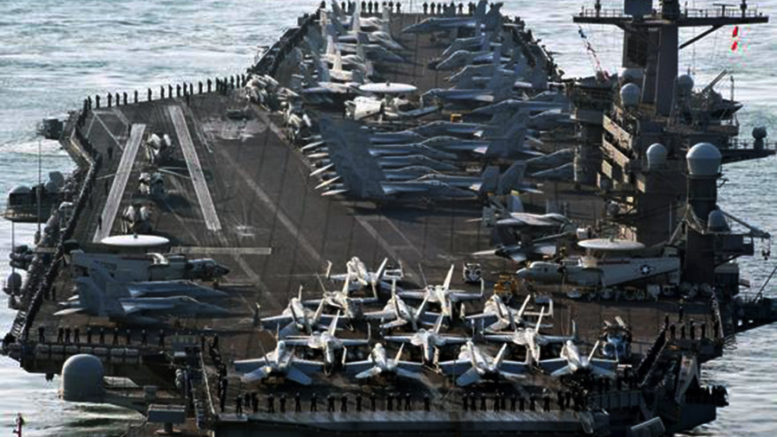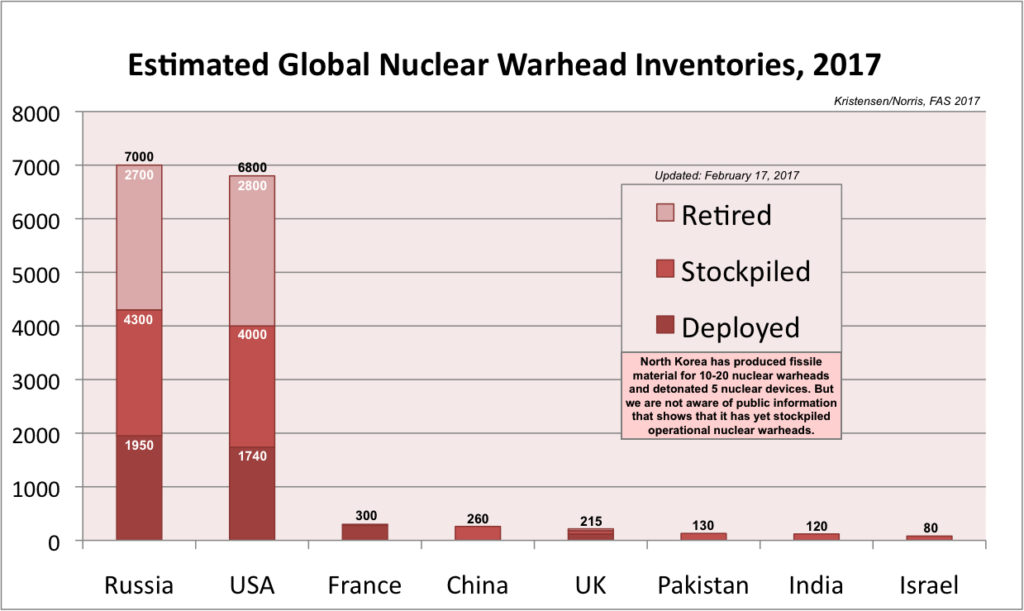Contributed from Victoria
A few days ago, Russia and China dispatched intelligence-gathering vessels to follow the U.S.S. Carl Vinson in waters off the Korean Peninsula, according to officials in the Japanese government.
Japanese newspaper Yomiuri Shinbun said that both Russian and Chinese navy officials are tracking the movements of U.S. ships in the region.
“It appears that both countries aim to probe the movements of the United States, which is showing a stance of not excluding military action against North Korea.”
It is highly likely that this is also meant to warn the United States that it cannot maintain a belligerent posture, without consequences and that Asian waters, including those near the Korean Peninsula can no longer be regarded as an American preserve.
The Japanese Self-Defense Forces were reported to also be increasing their maneuvers in the waters and airspace around the area.
These developments came on the eve of US vice president Mike Pence’s 10 day visit to the region.
Pence said at a press conference: “President Trump has made it clear that the patience of the United States and our allies in this region has run out and we want to see change,” adding,” all options are on the table,” pointing to recent military actions in Syria and Afghanistan.
Pence has since his arrival in South Korea, affirmed plans for the deployment there, of a new US anti-missile system.
In truth, there is very little sign of international support for American military action and most opinion is on the side of a negotiated solution.
North Korea’s testing of a 10 kiloton nuclear bomb has not helped ease the situation. Nevertheless, this is no excuse for an over-reaction. The test should be viewed in perspective. It is small in scale in quantity and size, in comparison with the major nuclear powers. The United states routinely detonates bombs ranging from 9,000 to 15,000 kilotons. Russia detonated a 50,000 kiloton one.
The graph below provides a graphic representation of existing nuclear stockpiles. North Korea’s has fewer than any of these nations, estimated to be somewhere around 10 to 20 warheads.
It would still be far better if North Korea pulled back from the development of nuclear weapons. But this is unlikely, while North Korea is continues to feel that a big power is pointing a gun at its head. In this situation, the nuclear option comes across as an attractive way to balance out the odds.
Changes are needed. The starting point is an end to gunboat diplomacy and to talk in good faith. North Korea needs to be assured that it is not facing imminent attack. The United states needs to work on a program to eventually remove its huge military arsenal from south of the border, which includes 35,000 American troops. Pressure to return nuclear weapons to South Korea needs to be resisted and any carried on board American ships, must be removed.
North Korea also needs assistance to transform to alternative energy sources. This had been promised before, but not delivered. This needs to change to break reliance on the nuclear option.
Shifting he Korea situation away from crisis is also necessary to remove a potential trigger for a much bigger confrontation between nations that could spiral out of control and into a new world war that will bring immense destruction and suffering. It would decimate the global economy and at its worst, destroy us all. This is worth fighting for.



Be the first to comment on "Russia and China challenge American armada near Korean Peninsula"